Fibroadenoma is the most common benign tumor of the breast occurring among the younger (20–35 years) women. It is symptom less being accidentally discovered by self palpation. On palpation, a uniform, firm, mobile, painless, and well-defined mass is felt. Commonly they are bilateral. Fibroadenoma with size >5 cm is known as giant fibroadenoma. Histologically they have an epithelial and a stromal component. A young patient however, may be reviewed 6 monthly as the risk of malignancy is less than 0.2%.2, 3
Types
Two histological varieties of fibroadenoma
(a) Pericanalicular fibroadenoma – consists of fibrous tissue surrounding a few small tubular glands. This type of fibro adenoma is smaller in size and hard. It occurs in young girls between 15 and 30 years.1
(b) lntracanalicular fibroadenoma– contains more glands which become stretched into elongated spidery shapes and become indented by fibrous tissue. This type of fibroadenoma is larger in size and comparatively soft. It is seen in middle-aged women between 35 and 50 years.1
Causes 4
- The cause might be related to reproductive hormones.
- Fibroadenomas occur more often during reproductive years.
- Can become bigger during pregnancy.
- Increases with use of hormone therapy.
Symptom
- The main symptom is a painless lump in the breast. It is a slow growing tumor and remains more or less same size for quite a long time. This may occur anywhere within the breast substance, though more often seen in the lower half than in the upper half.1
- Fibroadenomas breast are firm or rubbery, round with distinct, smooth borders. They can be easily moved.4
- Sometimes a soft fibroadenoma undergoes cystic degeneration leading to cystadenoma which is ultimately transformed into cyst sarcoma phylloides.1
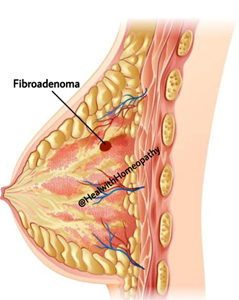 Diagnosis
Diagnosis
On examination:
- The swelling is not tender and without any rise in temperature.
- It is smooth, firm and possesses a well-defined margin.
- This tumor is not fixed to the skin or deeper structure.
- It is a highly mobile tumor without any tethering inside the breast substance.That is why it is often called a “breast mouse” or a “floating tumor.” There is no enlargement of the axillary lymph nodes.
Cystosarcoma Phylloides (Serocystic Disease of Brodie) –This is a real giant fibro adenoma, seen in women of over 40 years of age. Main complaint is huge swelling; though occasionally the patients may complain of serious discharge through the nipple. This is not a malignant condition. The tumor does not infiltrate the skin though the overlying skin becomes thin and tense. The subcutaneous veins become prominent. This tumor is not fixed to deeper structures. The axillary lymph nodes become rarely enlarged only secondary to infections.1
Duct papilloma – This tumor occurs in one of the major ducts. Occasionally two ormore ducts of the same breast may be affected. Majority of the patients are above 30 years ofage. Bloody discharge from the nipple is the main symptom. Generally it is bright red blood and less often dark blood. A cystic swelling may sometimes be felt just deep or lateral to the areola. If this swelling be pressed bloody discharge will come out from the affected duct. This should be considered as premalignant condition and the axillary lymph nodes are only enlarged when the growth has become malignant.1
Treatment
Homeopathic medicines can help dissolution of fibroadenoma; results vary depending on the size, patient’s history, age and duration of tumor. Surgical excision and biopsy is indicated only when the mass enlarges and or report of fine needle aspiration biopsy (FNAB) is inconclusive. Ultrasound guided cryoablation is a treatment option.2 and 3
Breast cancer risk might increase slightly if you have a complex fibroadenoma or a phyllodes tumor.4
Visit a doctor If 4
- You detect a new breast lump
- You notice other changes in your breasts
- A breast lump you’ve had checked before has grown or otherwise changed and appears to be separate from the surrounding breast tissue
Diet Restrictions7
Some diet restrictions are found to be helpful but are not the only treatment. It should be accompanied by a remedy advice from a registered homeopathic doctor or medical treatment by a physician. Avoiding caffeine, alcohol, salty food and saturated fat from your diet can be helpful. Adding fiber in the diet, adding green leafy vegetables can be helpful.
Homeopathic Medicines4
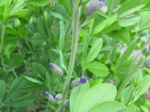 Calcarea Fluorica
Calcarea Fluorica
Breast nodes are hard. Make breast fibroadenomas smaller and hard lumps soften and finally make them disappear.
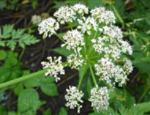 Conium Maculatum
Conium Maculatum
Glandular affections. Where nodes in the breast are present with pain in the breast before and during menstruation. Pain increases while touching.
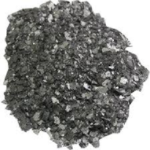 Graphites
Graphites
Tumors in the breast that are arising from some old scars which may have remained after healing of abscess in the breast. Nipples are sore, cracked and blistered.
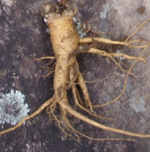 Phytolacca Decandra
Phytolacca Decandra
Mastitis; mammae hard and very sensitive. Tumors of the breasts with enlarged axillary glands. Breast is hard, painful and of purple hue. Mammary abscess. Cracks and small ulcers about nipples. Irritable breasts, before and during menses. Menses too copious and frequent.
 Pulsatilla Nigricans
Pulsatilla Nigricans
When nodes in the breast are accompanied by menstrual irregularity.The main menstrual irregularity noticed is suppressed menses for a long duration or scanty menses. For girls at puberty suffering from lumps or nodes in breast.
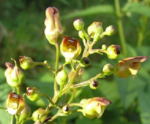 Scrophularia Nodosa/ Nosoda
Scrophularia Nodosa/ Nosoda
Whenever enlarged glands are present. Has a specific affinity for the breast; very useful in the dissipation of breast tumors.
References
- Dr. Das S. A manual on Clinical Surgery. 13threv.ed. Kolkata: Dr. S. Das; 2018. 648p.
- Dutta DC, Textbook of Gynecology. 7threv.ed. New Delhi: Jaypee Brothers Medical Publishers (P) Ltd.; 2016. 568p.
- Howkins & Bourne SHAW’S TEXTBOOK OF GYNAECOLOGY. 12threv.ed. New Delhi: B.I. Churchill Livingstone; 1999. 407p.
- Boericke W. Pocket Manual of Homoeopathic Materia Medica. San Francisco: Boericke & Runyon; 1901, 572p.
